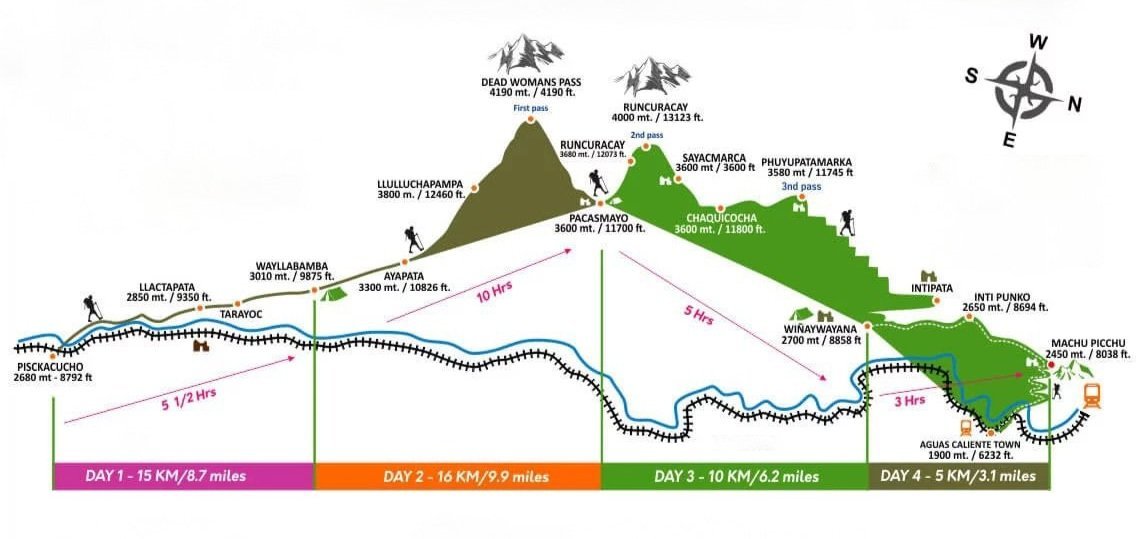You Must Know This Before Hiking The Classic Inca Trail To Machu Picchu
I hiked the Inca Trail for the first time in November 2018 and it changed my life. I loved it so much that I started organizing and leading group trips to experience this life-changing adventure.
If you’re preparing to hike the 4-day classic Inca Trail to Machu Picchu, here are a few things you must know before you embark on this adventure.
Permits are required to hike the Inca Trail
The Classic Inca Trail to Machu Picchu is a regulated trek. You need to obtain a permit from the government before you start this adventure. Only 500 permits are available each day for travelers, guides, and porters.
Not only that, but it’s not possible to hike the Inca Trail alone. Each hiker is expected to join a tour operator with a guide and a team of porters. So what does that mean for you?
When you decide to hike the Inca Trail, you must reserve your spot at least 4 months in advance. Your agency will take care of obtaining a permit on your behalf as soon as you book your spot with them.
Each permit for the Inca Trail is associated with a passport number. This is why, we ask our travelers to provide a copy of their passport early in the booking process.
There are checkpoints on the Inca Trail where you must show the passport used to obtain your permit. Remember to bring your passport with you on the Inca Trail in a ziplock bag to keep it protected.
Your adventure starts in Cusco
If you travel to Peru specifically to hike the Inca Trail, you will most likely start in Cusco.
Cusco is one of the oldest cities in the Americas and the oldest still inhabited City. People have been living there for more than 3,000 years.
Most travelers fly into Lima and then catch a connection to Cusco. Always ask your airline about where you should collect your luggage. For most flights to Cusco with a connection to Lima, travelers are expected to collect their bags in Lima before they check them back in for the flight to Cusco.
Altitude sickness is real
Cusco is a city located at about 11, 000 feet (3,400 meters) which is pretty high for someone coming from sea level or from a city at lower elevation. Generally speaking, travelers can experience some discomfort with the change of elevation. It takes a few days for the body to get adjusted to this change.
When you’re planning your adventure, allow for a day or two to acclimatize and get used to the change in elevation before you start your trek.
With our 10-day itineraries in Peru, we dedicate the first 2 days to city tours and one acclimatization hike before we start hiking the classic Inca Trail to Machu Picchu.
Here are a few things that can help you with high altitude:
Take it slow the first few days in Cusco: It’s tempting to want to get out and start exploring immediately but it’s better to take it slow until your body adjusts.
Keep yourself hydrated during your flight to get to Cusco and when you arrive.
Avoid alcohol, coffee or any drinks that can make you dehydrated.
Consider talking to your doctor about the possibility of taking prescription medication to help with high altitude sickness. In the USA, it’s known as diamox.
Most hotels offer coca tea that is known locally for helping with high altitude.
Pack some painkillers to help with headaches.
If things get worse don’t hesitate to go to the hospital and seek medical assistance.
The Inca Trail is demanding
The Classic Inca Trail to Machu Picchu is not an easy trek. The trek is a four-day journey that covers approximately 26 miles (42 kilometers) climbing up to 13,828 ft, the elevation at Dead Women’s Pass, the highest point on this trek and continues to the great site of Machu Picchu.
The trek is demanding with diverse terrains and high altitudes. Prior physical conditioning and training are essential to be prepared for this type of adventure.
These are three aspects of training that you should consider:
Strength training
Cardiovascular training
Endurance training
Classic Inca Trail to Machu Picchu
Trekking poles are important
The classic Inca Trail to Machu Picchu is notorious for having a lot of stairs, most of which are narrow and made of uneven rocks. Trekking poles are very helpful to find stability and give you support especially when descending.
